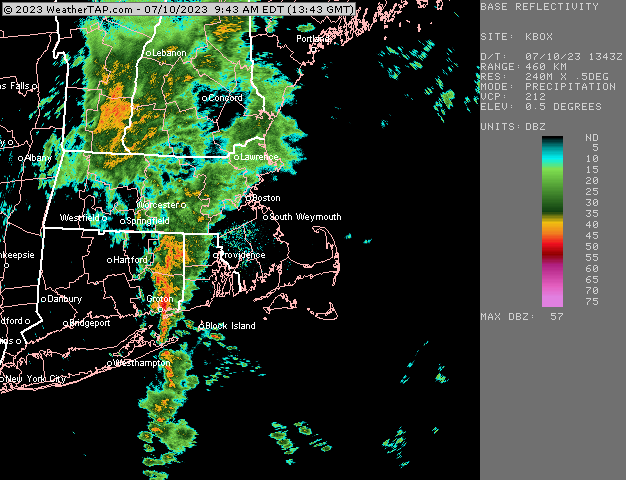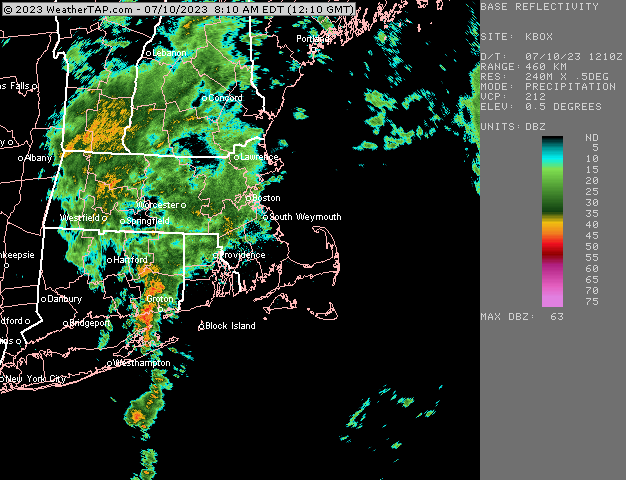-
Posts
90,933 -
Joined
-
Last visited
Content Type
Profiles
Blogs
Forums
American Weather
Media Demo
Store
Gallery
Everything posted by ORH_wxman
-
Update: On 7/16, NSIDC area was at 5.42 million sqkm. Here's where other years were on the same date: 2022: +420k 2021: +130k 2020: -300k 2019: -420k 2018: +370k 2017: +220k 2016: -100k 2015: +180k 2014: +360k 2013: +190k 2012: -480k 2011: +60k 2010: +150k 2009: +490k 2008: +610k 2007: -170k
-
Yeah I can’t remember how many times it screwed me over back around 495 which doesn’t usually happen. You’ll see it a couple times per winter but not almost every storm…lol.
-

July has arrived ... the Meteorologically defined mid summer month
ORH_wxman replied to Typhoon Tip's topic in New England
Looks like this morning’s MCS screwed us for this afternoon despite the good dewpoints. Satellite looks like a lifeless wasteland for convection around here. -
I’m still going to be amazed by that in like 30 years if I’m still around. Just storm after storm after storm where we had a high over the Grand Banks…I think one storm had a good high (Jan 23rd I want to say? And that high built in kind of late so it was a rain to snow deal) Even a high retreating over Nova Scotia would’ve been adequate on a few of those events. At least you get good front enders sometimes on those highs even when it doesn’t stay 100% snow.
-
Yeah I’d be shocked if your area was worse than last year. The only silver lining to such a shitty season is that even a merely run-of-the-mill subpar season will feel like a decent winter in comparison. Even in my area, I’d be surprised if we were as bad. I had something like 33” which was the lowest since probably ‘99-00 here.
-
It’s interesting looking at the historical climo of legit hurricane landfalls in New England. We had a VERY active period in the middle 20th century where we had 6 legit New England landfalls in roughly 50 years (and that doesn’t count close misses like the 1944 NYC hurricane or Gerda swiping ACK in 1969). But we had a similar lull to now back between the 1890s and the 1938 storm where we went over 40 years without a landfall and prior to that was very active in the 1850s-1890s. I always joke with Scott (CoastalWx) how the media is going to lose their proverbial shit when we have another active period for New England and east coast landfalls in general. The further away we get from that active middle 20th century period, the more the population becomes blissfully unaware of it.
-
I did make a prediction for NSIDC extent back in my prediction post (I went with 4.8 million sq km). Extent is a little harder to predict because compaction makes a big difference unlike area where compaction wouldn’t change a whole lot. In the short term (0-96h), the pattern is pretty good for compaction but the longer term ensembles aren't…however, things can always change in the arctic pretty quickly beyond 5 days. I personally forecasted a bit higher extent than I might normally would for a 3.1 million sq km area prediction (4.6 or 4.7 million sq km would be more in line with 3.1 area) due to the stronger buffer in the Chukchi region this year and lower area in Hudson Bay which melts out fully anyway…the latter was driving down the area numbers in late June. The mean pattern in August will likely have a big say in the final extent. If we get a lot of high pressure over the basin (esp skewed a bit toward North American side), then we’ll see a lot of compaction and lower extent…but if we see a lot of low pressure, it will keep the ice dispersed and the extent will stay higher by the time we get to the min in early or mid September.
-
What is the based on? I'll take the over.
-
Yes and this is what the prediction was for the minimum too based on the data at the end of June...very mundane middle-of-the-pack type season in the post-2007 world.
-
Update: On 7/12, NSIDC area was 5.91 million sq km. Here's how other years compared: 2022: +350k 2021: -380k 2020: -400k 2019: -580k 2018: +160k 2017: +280k 2016: -270k 2015: +140k 2014: +380k 2013: +230k 2012: -590k 2011: -110k 2010: +20k 2009: +580k 2008: +390k 2007: -140k
-

July has arrived ... the Meteorologically defined mid summer month
ORH_wxman replied to Typhoon Tip's topic in New England
There will be diurnal variation on anything that gets sunlight. The question is the magnitude. The FL Keys sensors were near 7F (over 3C) variation. Ct River is much more modest variation of ~1C. -

July has arrived ... the Meteorologically defined mid summer month
ORH_wxman replied to Typhoon Tip's topic in New England
Or using the water treatment plant on deer island to measure BOS snowfall. -

July has arrived ... the Meteorologically defined mid summer month
ORH_wxman replied to Typhoon Tip's topic in New England
If they are sticking these sensors in a shallow lagoon with the sand not far below them, those water temps are going to be pretty normal in the summer. It only takes one idiot over at a news stations to equate these readings with more offshore buoys to fire up the hype machine. It’s like using Maple Hollow in the winter to talk about how cold it got in CT one morning. -

July has arrived ... the Meteorologically defined mid summer month
ORH_wxman replied to Typhoon Tip's topic in New England
Maybe it's super shallow...that's the only way you could get a 7F diurnal range, and also have the readings that high to begin with. -
I’d love to see what type of production we get from that type of pattern in the modern day juiced SST environment. My guess is it would be really good.
-
It’s not going to be a weak Nino and probably not moderate either. Im leaning toward a strong Nino at the moment but short of “Super Nino” in the ‘82-83, ‘97-98, and ‘15-16 mold. Borderline cases like ‘72-73 and ‘65-66 are right in the mix though…and they are good PDO matches.
-
Yeah it prob does…esp if it is rapid, then the effects are non-linear. March is kind of weird though in that other factors start increasing in relevance too due to the strong increase in solar insolation compared to mid-winter. But if we’re focusing on the meat of the winter (mid Dec through mid/late February), ENSO stuff after new years is largely irrelevant. This is going to be an interesting evolution to follow though because of all the weird stuff going on as this Nino strengthens (the west-based forcing and the extremely negative PDO are two of the biggest unconventional factors so far)
-
I usually stop looking at ENSO in December. I suppose fast changes in January can still lead to a change in end-of-winter pattern ala late Feb into first half of March but the larger scale impacts mostly seem baked in by new years.
-
Update: On 7/10, NSIDC area stood at 6.11 million sq km, here’s where other years stood on the same date compared to 2023: 2022: +240k 2021: -240k 2020: -380k 2019: -580k 2018: +50k 2017: +220k 2016: -300k 2015: +150k 2014: +440k 2013: +260k 2012: -440k 2011: -40k 2010: -30k 2009: +470k 2008: +370k 2007: -110k
-
The forcing being way west all summer is definitely really weird compared to the Super Ninos....that and the PDO. I wonder if this one tops out more like 1.8 or something on the trimonthly ONI.
-
-
-

July has arrived ... the Meteorologically defined mid summer month
ORH_wxman replied to Typhoon Tip's topic in New England
Ugh...that's the worst. We take our kids every year but keep flexible....usually pick the nicest weekday during out of our vacation in adjacent western Maine to drive over and spend the day. Although maybe you can luck out where the rain is delayed a bit or more spotty....we had a day like that one year and the threat of scared off all the crowds, and we basically had the park with no lines or very short lines. It was great. -

July has arrived ... the Meteorologically defined mid summer month
ORH_wxman replied to Typhoon Tip's topic in New England
That's one reason I'm annoyed they haven't fixed the sensor there yet...it's always a great proxy to use for the type of airmass we are in. Like when ORH hits 90F, it's a pretty legit hot airmass....when they start going 93-94F, it's a "high end" heat wave. -

July has arrived ... the Meteorologically defined mid summer month
ORH_wxman replied to Typhoon Tip's topic in New England
Yeah they only average about 2-3 90F per year. Some years they fail to hit it (last occurrence in 2014....though 2015 almost pulled it off too until a September 90-burger)







